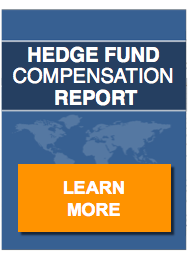Business continuity planning. Disaster recovery. BCP. DR. You know the terms. You know investors are looking for them. But do you know what the real differences are between them?
Business Continuity Planning and Disaster Recovery have the same goal: to implement procedures that will enable a business to recover in the event of a disaster or disruption. But each has its own focus.
Business Continuity Planning for Hedge Funds
Business Continuity Planning (BCP) revolves around people. A hedge fund business continuity plan should identify the steps necessary to get operations up and running as it relates to business functions and personnel. BCP plans usually identify mission-critical services, communication strategies, employee recovery procedures and training methods.
There are four critical steps to hedge fund business continuity planning:
- Identify what you need to protect. The simplest way to do this is to conduct a Business Impact Analysis (BIA). A BIA should include each functional area of your business (i.e. finance, operations, trading, human resources, etc.) This will help you acquire detailed information about each function’s business requirements – both during normal business hours and during a disaster.
- Determine how you are going to protect. Developing recovery strategies is a great way to plan out your procedures. Identify two or three different scenarios and your corresponding responses. Establish specific communication strategies for each. Be sure to include strategies for both internal and external communications.
- Educate employees. Set up employee information sessions and table top exercises so everyone is on the same page and understands the policies and procedures. Develop resources to distribute, including emergency contact information, wallet cards, and other vital materials.
- Validate and test. Test your alternate site and remote access locations to ensure your business operations will resume quickly and efficiently.
While business continuity planning is designed to ensure your business and personnel are prepared in the event of a disaster, you must also ensure that your systems and infrastructure will be equally able sustainable during a disruption.
Disaster Recovery for Hedge Funds
Disaster Recovery (DR) is directly related to the technology and infrastructure that supports business operations. In developing a disaster recovery strategy, hedge funds typically examine what applications and services they have in production and which ones are mission-critical. File shares, email, accounting and trading applications and voice capabilities are often the first that come to mind, but firms should evaluate which are most essential to them.
The two most important factors associated with DR planning are the recovery point objective (RPO) and the recovery time objective (RTO).
- Recovery Point Objective: The RPO is the point in time to which a firm must recover data as defined by the organization. In other words, the RPO is what an organization determines is an “acceptable loss” in a disaster situation. The RPO dictates which replication method will be required (i.e. nightly backups, snapshots, continuous replication).
- Recovery Time Objective: The RTO is the duration of time and service level within which a business process must be restored after a disruption in order to avoid unacceptable losses. RTO begins when a disaster hits and does not end until all systems are up and running.
Business continuity planning and disaster recovery have individual focuses, but they ultimately share the same goal: preparing businesses for potential disasters and ensuring those businesses are able to recover quickly and sustain minimal losses.
About the Author
Bob Guilbert is managing director of products and marketing at Eze Castle Integration. With more than 20 years of IT experience, Bob is responsible for leading all of Eze Castle’s marketing, partnership and product development functions. The scope of his efforts ranges from maximizing the value of the company’s brand, to establishing core strategic partnerships and developing new product lines for the company.
Eze Castle Integration supports the technology needs of over 550 hedge funds worldwide. You can register for free access the ECI’s Hedge Fund Disaster Recovery Knowledge Center, which includes a comprehensive guidebook, a webcast on “Meeting the Institutional Investor’s New Requirement,” a whitepaper titled “Business Continuity Planning: A Proven Approach for Hedge Fund & Investment Firms”, and a podcast on disaster recovery and business continuity for Hedge Funds.


